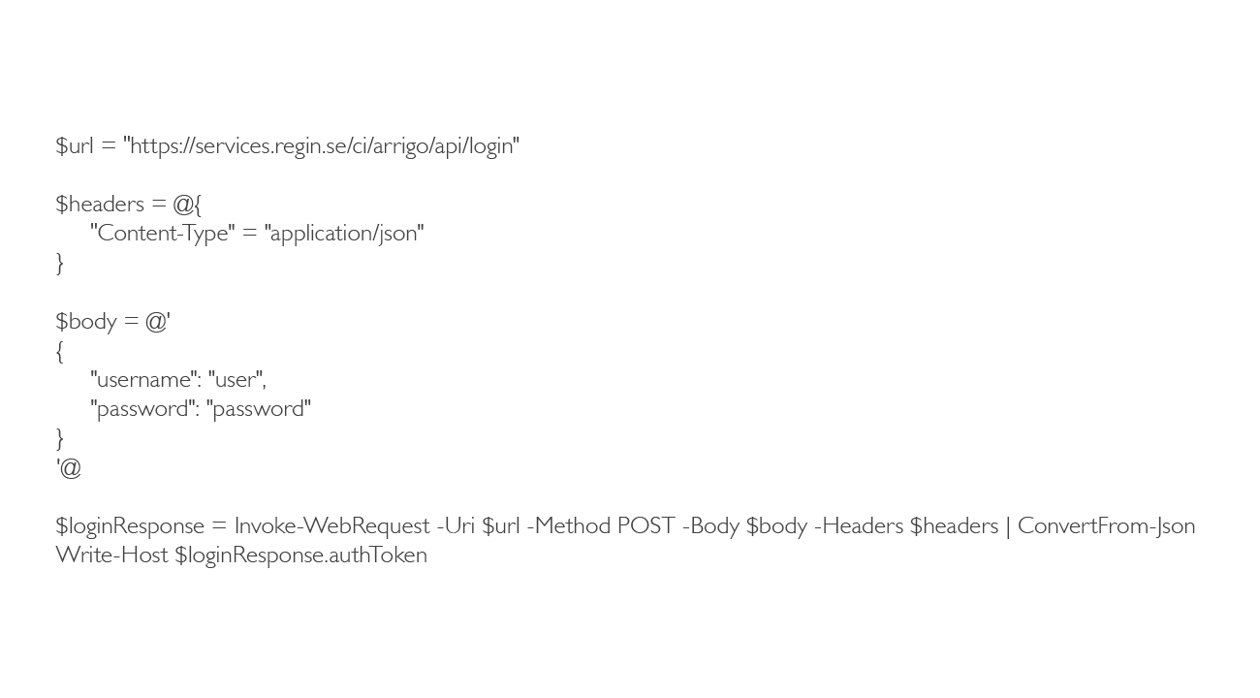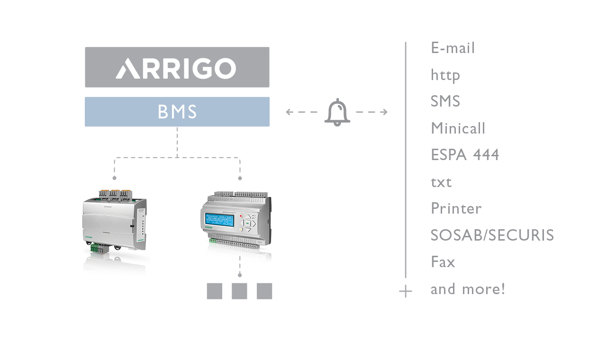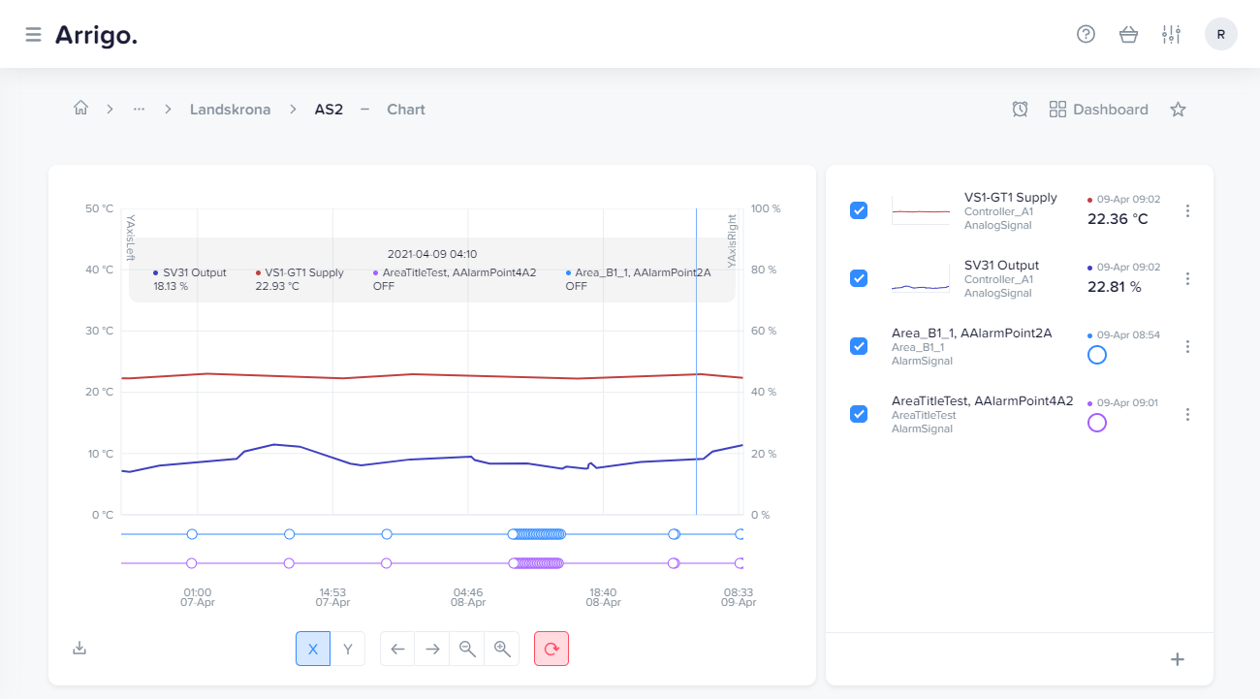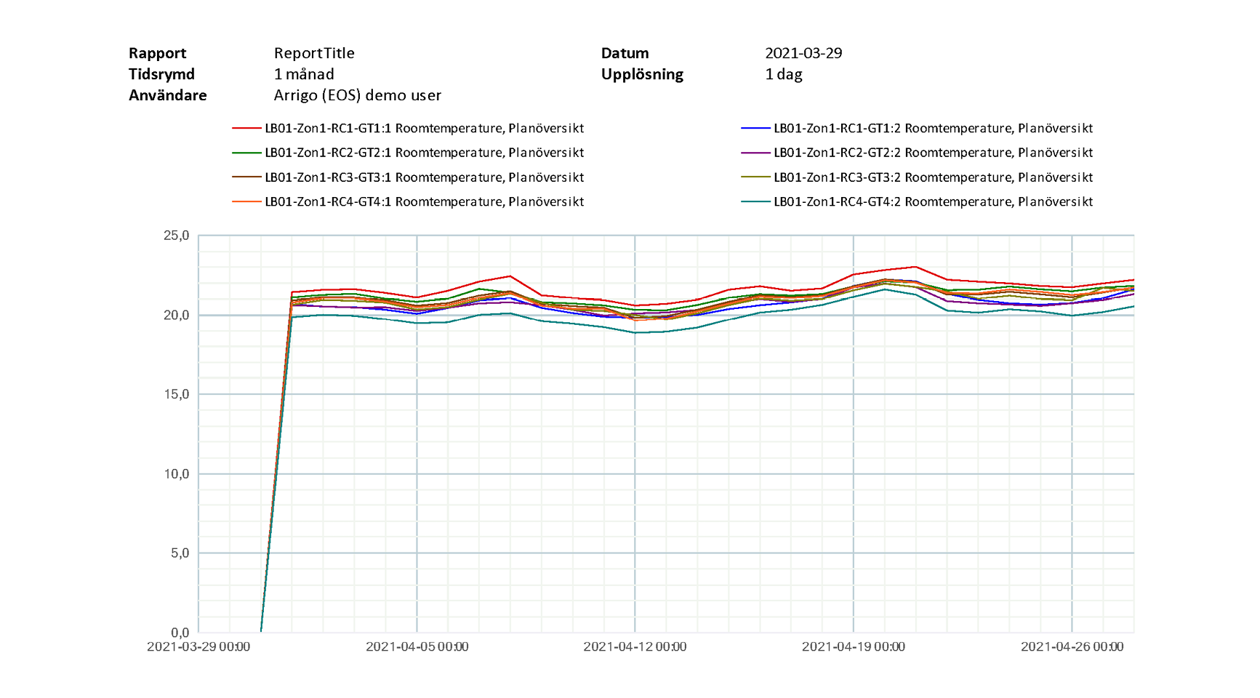Arrigo BMS function overview
Arrigo BMS. Functions overview.

Arrigo API. Unlock the full potential of building data
Arrigo BMS is equipped with a stable API to facilitate imports and exports of data from various systems. Through the open API, Arrigo BMS makes all data fully available and can interconnect to other systems, such as hotel booking services, business intelligence, etc. Data can be used either directly in Arrigo BMS, or it can be consumed by other systems that connect through the open API.
Through simple technology based on graphQL/REST on http over SSL you can add and delete information, read and write values, retrieve information, history, stored and real-time data. You also can connect via the web socket directly to Arrigo's Backbone and write your own extensions that can be called via server-side functions.
Third party integration
Arrigo BMS uses Regin's communication protocol EXOline as its native SCADA interface. In addition, users can integrate with controllers of any brand via OPC. If users require data from third-party systems in their controllers, this can easily be achieved through various interfaces, including Modbus, BACnet, and Mbus. Anyone working with Arrigo BMS can work in a flexible way to aggregate data, regardless of the source.
Charts, data logging and real-time trends
In Arrigo, you can easily track historic information in order to make informed decisions. Users can freely choose analog, digital and alarm signals to be presented in a historical chart window as a trend. Depending on the type of signal, logging of historical data can be conducted as:
- Variable-based time logging: fixed interval sampling, commonly used for analog values.
- Event-based logging: only logged when the event occurs, commonly used for digital and alarm signals.
- Real-time logging: only logged while the signal is shown in the historical chart window. The logging updates continuously and is lost when the window is closed. Real-time logging can be used with any signal in Arrigo.
The chart enables users to view, zoom, scroll and export data. Furthermore, the work done can be saved to be continued later either as personal work or as global work available to all users of the system.
Create dynamic front-end graphics and visualize real-time building processes
Dynamic front-end graphics can be great tools to visualize automation environments. Arrigo BMS provides a tool kit for creative work and gives integrators access to a comprehensive library of graphical objects that can be used as they are, or adjusted to suit any application.
With Arrigo BMS, integrators can work efficiently to create:
- graphic symbols
- complex shapes
- animations and interactions by running Javascript inside an SVG
- adjustments through graphic attributes, such as fill style, line style, orientation, positioning, and visibility
Full alarm handling
Lack of actionable information in alarms generated by building management systems is a common challenge for facility managers. Knowing the source of an alarm and being able to take immediate action is key to the reduction of downtime and efficient resolutions of potentially critical situations.
Arrigo is your system hub that collects all data from various sources. Via Modbus, BACnet, M-Bus, and OPC, Arrigo connects to controllers and field products in the system and communicates alarms instantly.
Arrigo provides efficient alarm functionalities that allow users to structure alarms and ensure that the right roles are informed at the right time to take the right actions.
Alarm functions in Arrigo
- Alarm widgets for real-time overviews and access to historical alarms
- Runtime configurable tools for quick determination of the nature and location of an alarm, with options for fast analysis and actions, such as acknowledgment, blocking, etc.
- Wide variety of filter possibilities
- Possibility to add alarms in historical charts

Remote alarms
Arrigo BMS has full support for push notifications and can instantly notify users of their relevant alarms and alerts using a wide variety of channels. Beneath we list the most common channels:
- SMS (UCP, TAP, PC-Text), etc.
- SMS via GSM modem for fast SMS (<15 seconds) without having a physical telephone connection
- SOSAB and SECURIS (Securitas v1, v2, and v4 protocols).
- Pager systems, eg MiniCall Text, MiniCall Numerik, TelePage Swiss, BT, etc
- Fax class 2 and class 2.0
- Network printers, such as '\\ SERVER1 \ ALARM PRINTER'
- LPD printers that use only one IP address and port
- Local printers via DOS (no page feeds) with prefix/suffix codes (for different colors etc)
- Modem printers
- E-mail (SMTP)
- HTTP to display alarm lists in Browser
- Nimbus alarm receiver with modem or TCP / IP for inter / intranet
- Text files
- ESPA 444
- and more...
Reports
Reporting is indispensable for applications and systems with advanced data processing and analysis capabilities. In Arrigo, any data fetched from the data model can be used to build a report:
- Data coming from hardware devices (e.g., a controller)
- Properties of system resources
- Query results
- Historical property values or events selected by custom criteria.
- Data generated by a script
Reports should be your main go-to strategy when you are trying to avoid nuisance alarms. As a matter of fact, reports can be a great strategy for prioritizing maintenance efforts.
Reports can be exported to various formats as CSV, PDF and also sent via email. Reports can be triggered manually, on events or on a schedule.
Scripting
For customers who require a deeper level of customization or integration, Arrigo BMS provides an open platform for client-side and server-side scripting. Arrigo BMS uses JavaScript (ECMA script 6 standard) which enables advanced logic, data mining, SQL access, implementation of custom functions, access to other applications and APIs.
JavaScript is native to Arrigo’s server-side scripting and widely supported by common web browsers for client-side scripting. It has a low threshold to get started and is one of the most commonly used programming languages for all types of applications.

Security, access, and rights management
Arrigo provides a selection of integrated security models and options to match your requirements, including:
- Password and user information are stored on the server and utilize a Sha256 password hash algorithm
- User capabilities in the Arrigo application are based on areas of responsibility and authority
- Microsoft Windows Authentication grants permissions to Arrigo users authenticated on a domain controller or local computer, based on user identity and group affiliations
- Customers who have adopted the Arrigo Platform also enjoy secure integration all the way down to the level of each data element or attribute
- Safe communication through http and WebSocket over TLS 1.3 encrypted connection (HTTPS and WSS)

Language support
Arrigo is developed with full native support for English, German, French and Swedish for both integrators and end-users. The operator interface is available in a number of additional languages. Please contact your local market support for more information.



